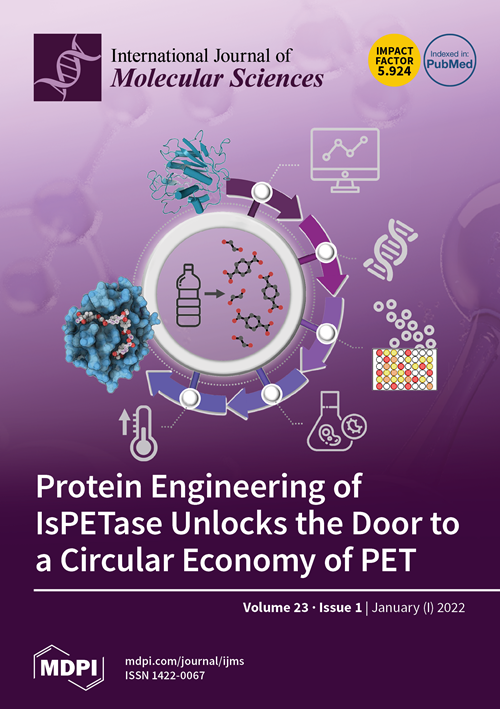一名患有脑病、心肌病和致命性非癫痫性阵发性难治性呕吐的患者体内的新DNM1L突变
IF 4.9
2区 生物学
Q1 BIOCHEMISTRY & MOLECULAR BIOLOGY
引用次数: 0
摘要
线粒体分裂和融合是线粒体质量控制和维持细胞呼吸的重要动态过程;它们在心肌细胞和神经元等高能量需求细胞的形成和维持过程中也发挥着重要作用。DNM1L(dynamin-1 like)基因编码 DRP1 蛋白,这是一种进化保守的 dynamin 家族成员,负责线粒体的裂变;它无处不在,但在发育中的新生儿心脏中高表达。据报道,DNM1L 基因的新发杂合致病变体与新生儿或婴儿期发病的脑病有关,这些脑病的特征是肌张力低下、发育迟缓和难治性癫痫。然而,此前仅有一例报告了心脏受累。研究人员利用下一代测序技术(NGS)对一名女婴进行了基因评估,该女婴患有发育迟缓伴痉挛性肌张力障碍、四肢瘫痪和左心室肥厚性心肌病。对肌肉活检组织进行了组织化学分析,并对电子传递链进行了分光光度测定;此外,还对培养成纤维细胞中线粒体和过氧化物酶体的形态进行了评估。在此,我们扩展了DNM1L相关疾病的表型,描述了一例DNM1L杂合子突变的女孩,她患有进行性婴儿脑病,伴有心肌病和致命的阵发性呕吐,与球部短暂性异常T2高密度和弥散加权成像(DWI)限制区相关,但没有癫痫。建议对 DNM1L 基因突变患者进行心脏受累的仔细评估。本文章由计算机程序翻译,如有差异,请以英文原文为准。
De Novo DNM1L Mutation in a Patient with Encephalopathy, Cardiomyopathy and Fatal Non-Epileptic Paroxysmal Refractory Vomiting
Mitochondrial fission and fusion are vital dynamic processes for mitochondrial quality control and for the maintenance of cellular respiration; they also play an important role in the formation and maintenance of cells with high energy demand including cardiomyocytes and neurons. The DNM1L (dynamin-1 like) gene encodes for the DRP1 protein, an evolutionary conserved member of the dynamin family that is responsible for the fission of mitochondria; it is ubiquitous but highly expressed in the developing neonatal heart. De novo heterozygous pathogenic variants in the DNM1L gene have been previously reported to be associated with neonatal or infantile-onset encephalopathy characterized by hypotonia, developmental delay and refractory epilepsy. However, cardiac involvement has been previously reported only in one case. Next-Generation Sequencing (NGS) was used to genetically assess a baby girl characterized by developmental delay with spastic–dystonic, tetraparesis and hypertrophic cardiomyopathy of the left ventricle. Histochemical analysis and spectrophotometric determination of electron transport chain were performed to characterize the muscle biopsy; moreover, the morphology of mitochondria and peroxisomes was evaluated in cultured fibroblasts as well. Herein, we expand the phenotype of DNM1L-related disorder, describing the case of a girl with a heterozygous mutation in DNM1L and affected by progressive infantile encephalopathy, with cardiomyopathy and fatal paroxysmal vomiting correlated with bulbar transitory abnormal T2 hyperintensities and diffusion-weighted imaging (DWI) restriction areas, but without epilepsy. In patients with DNM1L mutations, careful evaluation for cardiac involvement is recommended.
求助全文
通过发布文献求助,成功后即可免费获取论文全文。
去求助
来源期刊

International Journal of Molecular Sciences
Chemistry-Organic Chemistry
CiteScore
8.10
自引率
10.70%
发文量
13472
审稿时长
17.49 days
期刊介绍:
The International Journal of Molecular Sciences (ISSN 1422-0067) provides an advanced forum for chemistry, molecular physics (chemical physics and physical chemistry) and molecular biology. It publishes research articles, reviews, communications and short notes. Our aim is to encourage scientists to publish their theoretical and experimental results in as much detail as possible. Therefore, there is no restriction on the length of the papers or the number of electronics supplementary files. For articles with computational results, the full experimental details must be provided so that the results can be reproduced. Electronic files regarding the full details of the calculation and experimental procedure, if unable to be published in a normal way, can be deposited as supplementary material (including animated pictures, videos, interactive Excel sheets, software executables and others).
 求助内容:
求助内容: 应助结果提醒方式:
应助结果提醒方式:


